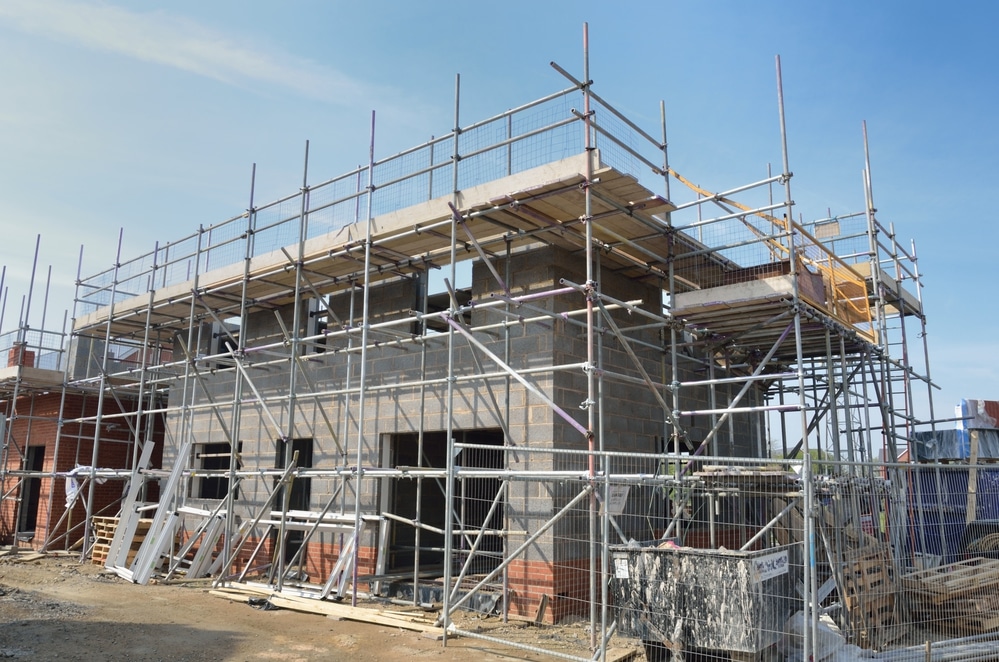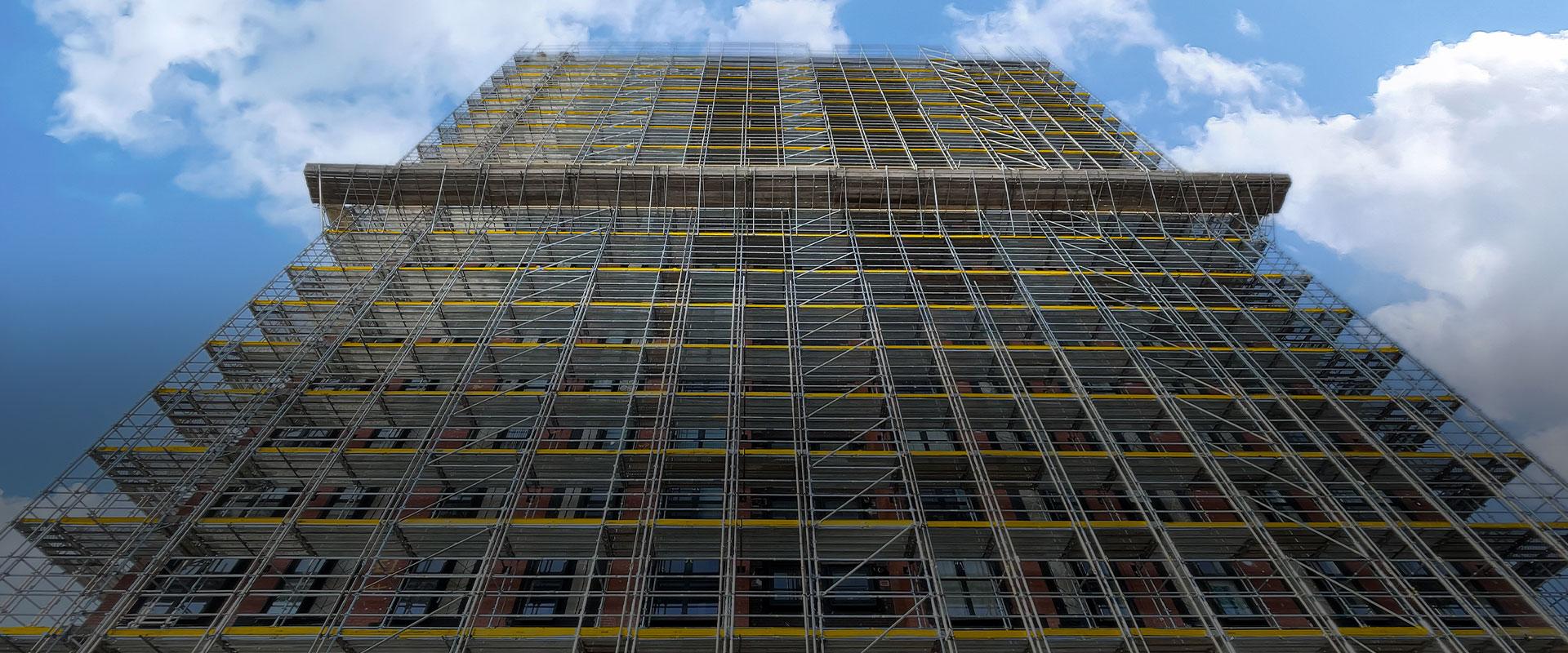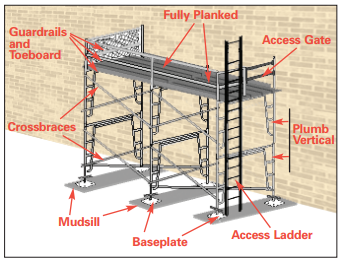Affordable and Professional Scaffolding Cobham Services Available Now
Affordable and Professional Scaffolding Cobham Services Available Now
Blog Article
Exploring the Various Kinds Of Scaffolding Made Use Of in Construction Tasks
The building market depends heavily on different kinds of scaffolding to satisfy specific task needs, each offering distinct advantages and applications. Traditional frame scaffolding provides a strong structure for general jobs, while put on hold scaffolding is crucial for job on high-rise frameworks.

Typical Framework Scaffolding
Conventional frame scaffolding is among the most widely utilized methods in the construction industry as a result of its robustness and versatility. This system includes upright and horizontal structures that are assembled to create a secure system for materials and workers. The primary parts consist of upright messages, straight journals, and diagonal dental braces, which together offer a strong structure that can sustain significant lots.
One of the key benefits of conventional framework scaffolding is its adaptability to different construction jobs, ranging from property buildings to big business structures. The modular style enables for very easy assembly and disassembly, making it reliable for both temporary and long-term tasks. Additionally, the system can be tailored in elevation and size, fitting different structure layouts and site problems.
Safety is extremely important in scaffolding applications, and standard framework systems are furnished with guardrails and toe boards to stop falls and make sure worker protection. Regular inspections and adherence to safety and security policies are important in preserving the stability of the scaffold (Scaffolding). In general, traditional framework scaffolding stays an essential choice in the building industry, giving a trusted platform for labor and boosting overall task performance

Suspended Scaffolding
Put on hold scaffolding uses a special remedy for building and construction tasks that need access to raised surface areas, especially in scenarios where typical structure scaffolding might be impractical. This sort of scaffolding is typically put on hold from the roof covering or top levels of a structure, making use of a system of wheels, systems, and ropes to create a working space that can be adapted to numerous heights.
Among the key advantages of suspended scaffolding is its versatility. It can be easily repositioned or decreased to suit adjustments in building demands, making it suitable for tasks such as home window setup, façade work, and maintenance on skyscraper structures. Additionally, the very little footprint of put on hold scaffolding permits much better use ground area in metropolitan settings, where room is typically restricted.
Safety and security is a vital factor to consider in the use of suspended scaffolding. Proper rigging and anchoring systems need to be employed to ensure security and protect against mishaps. Operators must also be learnt the safe usage of this tools. In general, put on hold scaffolding provides a effective and effective service for accessing hard-to-reach locations in various building circumstances, boosting both productivity and safety on website.
System Scaffolding
System scaffolding, typically considered as a contemporary remedy in the scaffolding market, consists of pre-engineered components that can be swiftly set up and adapted for numerous construction projects. Scaffolding. This sort of scaffolding is identified by its modular design, which enables for versatility and efficiency on work websites, fitting structural needs and different elevations
Usually made from high-strength steel or aluminum, system scaffolding provides improved longevity and stability. The components include upright messages, horizontal ledgers, and angled dental braces, which interconnect firmly, making certain a robust structure. The layout often includes standardized fittings, simplifying setting up and disassembly processes, therefore decreasing labor time and costs.

Rolling Scaffolding
Moving scaffolding is a versatile choice to typical fixed scaffolding, created for wheelchair and ease of usage on construction websites. This sort of scaffolding consists of a platform supported by frames with wheels, enabling employees to conveniently transfer it as required. The flexibility feature substantially enhances productivity, as it reduces downtime connected with setting up and taking apart taken care of scaffolding.
Generally constructed from lightweight materials such as light weight aluminum or steel, rolling scaffolding provides a sturdy yet portable solution for tasks calling for constant repositioning - Scaffolding. It is particularly advantageous in jobs such as painting, drywall setup, and electric job, where access to numerous elevations and locations is needed
Safety and security is paramount in rolling scaffolding layout, with functions such as securing wheels to avoid unexpected movement when being used, and guardrails to shield employees from drops. In addition, lots of versions are flexible in elevation, accommodating numerous project demands.
Cantilever Scaffolding

The design of cantilever scaffolding normally entails making use of arms or brackets secured to a structure or framework, enabling the system to prolong exterior safely. Safety is vital; thus, these scaffolds have to be engineered to endure different loads and environmental conditions. Regular evaluation and upkeep are vital to guarantee architectural integrity and worker security.
Cantilever scaffolding is favored for its flexibility and reliable use space, making it a preferred option in urban settings where area restrictions are common. It promotes less complicated access to high elevations, eventually adding to the general effectiveness of building jobs. Similar to all scaffolding kinds, appropriate training and adherence to security criteria are essential for employees using cantilever scaffolding.
Final Thought
Typical framework scaffolding gives stability, while suspended scaffolding supplies versatility for elevated jobs. System scaffolding helps with fast setting Domestic scaffolding up, and rolling scaffolding boosts flexibility for differing work settings.
Conventional structure scaffolding gives a tough foundation for general jobs, while put on hold scaffolding is crucial for work on skyscraper frameworks.Moving scaffolding is a flexible alternative to standard set scaffolding, created for wheelchair and ease of use on building and construction sites. As with all scaffolding kinds, proper training and adherence to security criteria are essential for employees using cantilever scaffolding.
Standard structure scaffolding offers security, while suspended scaffolding supplies convenience for elevated tasks. System scaffolding promotes quick assembly, and rolling scaffolding improves movement for varying work environments.
Report this page